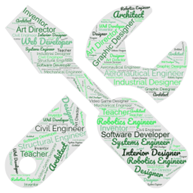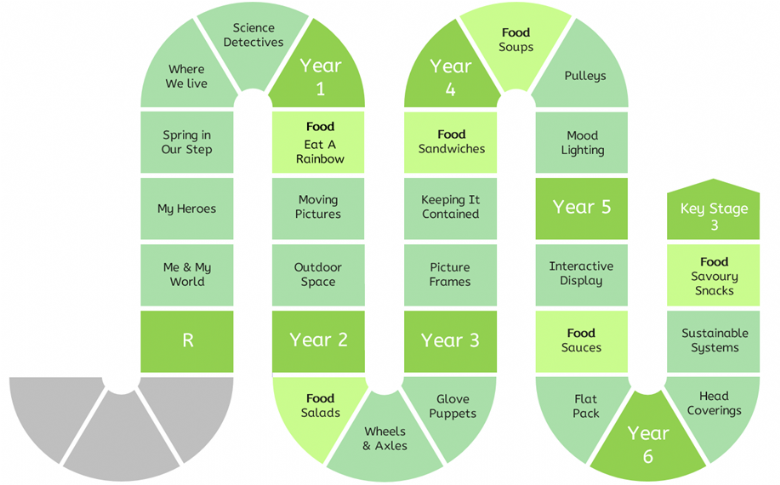Design & Technology/Food
Intent
Our design and technology curriculum has been designed to allow pupils to develop the creative, technical and practical expertise needed to design and make products confidently and successfully. In food, (which is a distinct strand of our D & T curriculum), we aim for pupils to understand and apply the principles of nutrition and learn how to cook simple dishes.
Pupils will explore the contributions that designers and engineers make to creativity, culture and wealth and that more opportunities exist than ever before due to technological advances. We are keen to ensure that all pupils can see themselves reflected in the design and technology curriculum, by exploring the contributions made by a wide range of designers, past and present. Opportunities to develop character by understanding the difficulties faced by those designers is important and our curriculum is designed so that pupils can see how characteristics such as resilience and risk taking contribute towards success. Our curriculum aims to ensure that all pupils build and apply a repertoire of knowledge, understanding and skill in order to understand the design, making and evaluation process. Our curriculum achieves this by breaking the knowledge and skills into three distinct areas of design and technology learning that are mapped out across units and year groups.
FOOD
'Food’ is a distinct strand within our design and technology curriculum. The purpose of the food strand is not to design dishes. While this is ultimately the skill of a chef, there is a huge amount of prerequisite knowledge that needs to be mastered before new dishes can be designed. Chefs need to know about nutrition and dietary requirements; equipment and techniques; source and characteristics of ingredients; an awareness of the principles of cooking (which Ashbee in Curriculum: Theory, Culture and Subject Specialisms (2021), describes as bases, thickening, reduction, seasoning, layering, topping, balance, contrast etc.); and a growing knowledge of tried-and-tested recipes. The knowledge that pupils are taught in primary school therefore focuses more on this prerequisite knowledge – the basics of cooking and nutrition – and less on the design elements of the subject.
The aim of our curriculum for food is to ensure that all pupils leave primary school with the ability to cook a selection of healthy dishes using a variety of techniques, and to be able to make choices about what they eat based on values like source, seasonality, and nutritional value. Pupils will be taught food sources, hygiene and nutrition and will be taught to prepare food through chopping, preparing, combining and heating. These life skills are even more important in the context of rising obesity. According to the NHS, in the East of England in 2022-23, this stood at 8.1% for pupils in the EYFS rising to 20.6% for pupils in year 6 – and Peterborough has one of the highest rates of child obesity in the region (more than 9% and 24% respectively). The disciplinary, conceptual and procedural knowledge of food is also explicitly taught and mapped to ensure sufficient time is allocated to it.
IMPLEMENTATION
To ensure the successful implementation of our design and technology curriculum, we use teaching and learning strategies that ensure pupils can talk about, replicate and create amazing products.
- Lessons include many opportunities for pupils to engage in discussions about their products and a range of designers and engineers.
- Pupils learn how to effectively critique the products they are exploring and making.
- Pupils develop their sense of vision through observation and experimentation, practicing and refining their designs.
- Lessons are practical and allow pupils to explore a range of materials and tools.
- Pupils use a wide variety of media and resources.
- Pupils continually reflect and evaluate their own design and technology work.
- Lessons include demonstrations and guided instructions so pupils improve their accuracy using tools.
- Design and technology terminology and vocabulary are used accurately.
- Making explicit and deliberate links to other curriculum subjects – particularly science – to ensure that pupils use and apply scientific concepts in a design & technology or food setting at the appropriate time.
Design & Technology Roadmap

Key Documents
Entire D&T/Food Curriculum - PDF Version

To find out more about our curriculum please contact the school office.
